
Ava Teng

Colin Hsiang-Hsien Hwang

Daniel Svediani

Ethan Sung

Irene Thomas

Keith Mahar

Madison Cheungsomboune

Sarah Martellino

Selin Bilgi

Urja Parekh
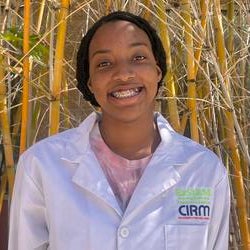
Samaria Bailey

Brianna Boye

Emma Do

Kenneth Garnett

Brian Higgins
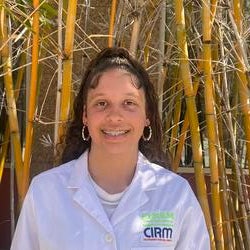
Anaiya Mayfield
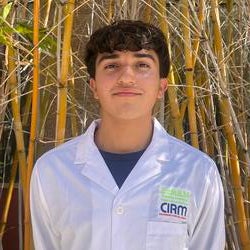
Nicolas Mendoza
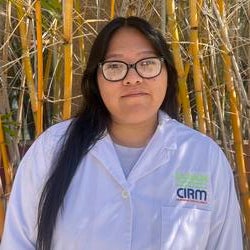
Estephanie Salinas

EwongoAbasi Umoh

Charlie Perez

Bianca Chirrick

Bernice Nkemnji

Isabella Martinez

Allison Paredes
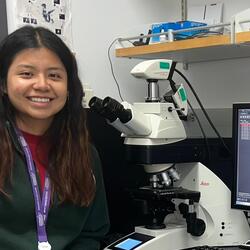
Jennifer Ramirez Flores

Serena Hannifin
Poster #027
Title
Smartflares: Illuminating Pathways in Wilms Tumor Research
Abstract
Wilms Tumor (WT) is a pediatric kidney cancer that develops due to overexpression of SIX2. SIX2 is a transcription factor that’s important for nephron formation in development. In physiological conditions, cells expressing SIX2 are exhausted before birth. In WT, SIX2 activity continues past birth, causing cells to rapidly replicate and form tumors. To investigate SIX2+ cells, we used a tool called Smartflares which detect RNA targets in live cells without damaging the cells. They’re composed of a gold nanoparticle, capture strand, and reporter strand. We hypothesized that we could isolate SIX2+ cancer stem cells from cultured WT cells. We labeled cultured WT cell populations with Smartflares targeting SIX2 and performed FACS analysis, finding >60% of the cells were SIX2+. Confirmation of SIX2 protein expression was through Western Blotting. Successful isolation of these cells will allow us to study the mechanisms that regulate Wilms Tumor.

Isabella Krauss

Kaitlyn Morrison

Anna Villatoro

Seth Pickens

Obianuju Oyeoka

Kristy Xiao

Nicole Padilla Alvarado

Nghi Nham

Belem Osorio

Mercy Niyi-Awolesi

Vy Phan

Katherine Bien

Isaac Jung

Jonathan Li

Christine Lin

Jessica Lu

Daniel Nam

Natalie Sandoval

Jordan Struve

Julier Thein

Angelina Wu

Aaron Yang

Alenabell Yang

Vivian Yuan

Kira Zeng

Dyllan Fernandez

Joannah Jugalbot

Kimberly Vincent
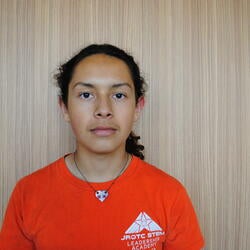
Victor Martinez

Brook Zerihun
REFERENCE LINKS
The co-mutation of EGFR and tumor-related genes leads to a worse prognosis and a higher level of tumor mutational burden in Chinese non-small cell lung cancer patients - PMC (nih.gov)

Jamie Ramos

Jonathan Methippara

Brian Chen

Alberto Alonzo Garcia Brito

Saleh Saleh

Thi Le

Jacky Law

Yunxi Zhang

Thu Lei

Diane Joung

Yuying Huang

Audrey Handoko

Lucia Otanez
The current work aims to analyze HT-29 cells– a human colorectal cancer cell line commonly used in research due to their well-characterized genetic profile. Once the HT-29 cells are engineered to express the mms6 gene, they gain the ability to produce magnetite nanoparticles more efficiently. The laboratory work focused on verifying if said HT-29 cells accurately expressed the mms6 gene with the help of q-PCR.

Santo Quintero

Crystal Alvarez
blood flow and limited cell density within the tissue. Tissue engineering is currently being
explored as a promising possible treatment to repair damaged ligaments but challenges
emerge to identify a scaffold material that can withstand the tensile forces in the ligament
while maintain high cell survivability. Additionally, each defect site will vary in shape or
size requiring an optimal solution to account for all three factors. Therefore, we propose a
Digital Light Processing (DLP) bio-ink, based on the bioinert Poly (Glycerol-co-Sebacate)
Acrylate (PGSA) polymer conjugated with the cellular adhesion agent Bio-ionic Liquid
Bicarbonate (BIL-BC) (Bio-PGSA). Our results demonstrate a highly optimized bio-ink
that allows for the creation of high-fidelity structures opening the avenue to regenerative
medicine applications for ligament damage.

Alayna Yared

Vani Gupta

Yunshu Zhang

Kavya Kadakia

Julian Methippara

Isabella Mocino

Micah Vo

Charynna Pe Benito

Chigozie Monye

Paul Calmac

Yuvraj Gill

Angelina Gan

Manahil Rehman

Kelly Loi

Bahar Zahir
Glucocorticoids (GCs) are a group of powerful anti-inflammatory, immunosuppressive drugs against autoimmune diseases like rheumatoid arthritis, allergies, and asthma. However, prolonged GC exposure through continuous treatment deteriorates the musculoskeletal system while also having an inhibitory effect on fracture healing, contributing to GC-induced osteoporosis and osteonecrosis. The underlying molecular mechanisms remain elusive. Previous research using single cell RNA sequencing has identified Basigin/CD147 (Bsg), a protein encoded by the Bsg gene, to be highly expressed in mice SSCs exposed to GC supplementation. To assess translational implications of high levels of Bsg in bones, we lentivirally overexpressed Bsg in prospectively isolated patient-derived human SSCs and conducted in vitro osteogenic differentiation assays. Basigin overexpression led to a reduced mineralization capacity of human SSCs compared to controls. However, when cells were simultaneously treated with parathyroid hormone or Bsg antibody, Titeosteogenic potential was rescued. This might inform new clinical approaches to prevent GC-induced bone deterioration.

Xayra Herrera
We aim to analyze patient samples from the UC Davis B cell Lymphoma clinical trial. We use staining techniques and flow cytometry analysis to establish associations between T-cell subsets, immunomodulatory markers, and patient treatment outcomes. This research seeks to improve personalized B cell lymphoma treatment by examining the link between immune responses and therapeutic efficacy.

Dilshodbek Namozov

Michaiah Pettway

Amy Yu

Ingrid Regalado

Gennesis Martinez
Kevin Chen M.S., Daniel E. Wagner Ph.D.
Creating a disease model for Cornelia de Lange using SMC1 KO zebrafish
Cornelia de Lange syndrome (CdLS) is a developmental disease that affects craniofacial and limb development, heart development, body size, and more. CdLS is difficult to study in mammals because it develops in utero which makes it almost untraceable in the early stages of embryonic development. Zebrafish on the other hand develop ex-utero which allows us to study how this disease works to find a cure/ preventative. We microinject CAS9 to KO SMC1a in zebrafish to model CdLS and look for phenotypes that resemble CdLS in humans. SMC1 KO fish had evidence for developmental delays, variable defects in body morphology, were missing fins, most cartilage and bones, had heart edemas and their lifespan was 7 days. In conclusion, zebrafish are extremely vital for studying CdLS as they mirror humans patients with CdLS so if we continue to study them there's no doubt progress toward a cure will be inevitable.

Giselle Ornelas

David Carreno
The first strategy utilizes promoter-less DNA vectors carrying a selection marker (puromycin resistance gene) driven by the endogenous promoter of target cells. The second strategy involves expressing the selection marker from its own promoter. Although we used PCR to amplify promoter fragments required for the second strategy, technical difficulties prevented the assembly of the final vectors. Consequently, we proceeded with the promoter-less gene targeting strategy.
We generated plasmid vectors carrying various fluorescent proteins. After validating the correct assembly through restriction digestion, the plasmid vectors were electroporated into iPSCs along with CRISPR/Cas components targeting the nuclear protein H2B. Successful generation of the iPSC line carrying the fluorescent protein with a nuclear localization was confirmed via fluorescent microscopy.

Shaan Misra
Germinal matrix hemorrhage (GMH) contributes to a significant portion of neurodevelopmental diseases and occurs in 20-40% of infants born preterm before 30 gestational weeks. Survivors are at 50-70% risk for birth defects hydrocephalus, cerebral palsy, and cognitive impairments. Finding the etiology of GMH is a goal of the Eric Huang Lab. Prior studies, show that brain tissue samples from premature infants with GMH have high levels of activated neutrophils and monocytes that produce proinflammatory factors—ELANE and CXCL16—which disrupt vessels. These factors, on injection into pregnant dams, demonstrated an increased level of hemorrhage in the ganglionic eminences of mouse embryos. We expect that ELANE and CXCL16 will act as inducers of inflammatory responses in blood vessels and perturb neurogenesis in the ganglionic eminences. Contrary to our expectation, by immunostaining, there was no increase in fibrinogen levels in areas of hemorrhage. This study aims to clarify the interactions between inflammation, vasculature, and neurogenesis.

Jennifer Liu
Jennifer Liu1,2, Sebastian Baldeon2,3, Juan Moriano2, Tanzila Mukhtar2, Arnold Kriegstein2
1Ruth Asawa School Of The Arts, San Francisco
2Eli and Edythe Broad Center for Regeneration Medicine, University of California, San Francisco
3John O’Connell High School, San Francisco
Down syndrome (DS) caused due to trisomy of human chromosome 21 affects 1 in 700 births. The precise causes of DS are not fully understood. It is followed by successive cognitive loss and development of pathological markers of dementia with age. Therefore, understanding the molecular characteristics of DS is important for understanding the disease, and make clinical advancements to ameliorate DS symptoms.
Our project focused on characterizing cellular differences in cortical samples from individuals with DS compared to age-matched controls. Our preliminary immunostainings revealed interesting phenotypic changes in radial glia processes expressing GFAP protein, with a strong reduction of GFAP along the basal endfeet in DS, compared to controls. We also observed an increase in GFAP expression in the outer subventricular zone, one of the progenitor niches in the human cortex in DS. Further comprehensive characterizations are needed to understand the clinical implications of the observed phenotypic changes.
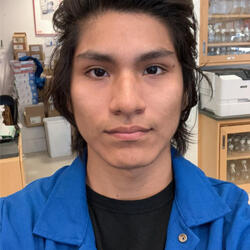
Sebastian Baldeon
We focused on characterizing the subcellular localization, morphology and structural dynamics of mitochondria in progenitor cells and neurons of the neocortex. We performed immunostainings and used confocal microscopy to examine mitochondria in both progenitors and neurons at different stages of neocortical development. For our immunostaining we used proteins expressed by radial progenitors, newborn neurons and other glial cells. Our results include: 1) Different cell types, at different locations in the neocortex; 2) Distinct subcellular localization of mitochondria: around the nucleus, also in cell processes located in radial glia cells.
Overall, we studied cell type diversity and mitochondria in the human brain using immunostainings and confocal microscopy. Future research is required to study mitochondrial functions and localization in specific cell types, and possible implications in disease.

Farli Jo De La Cruz

Ethar Alameri
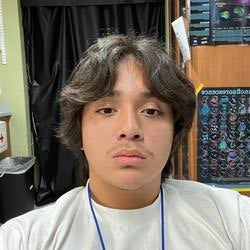
Yael Ruiz

Michelle Macias

Daniela Galvan

Abner Martinez

Kevin Tran

Sophie Ayma

Jason Zhang

Naomi Shim

Nellie Perez

Sara Hansali

Saanvi Dogra

Billie Joelle Bote

Shawn Delaware
